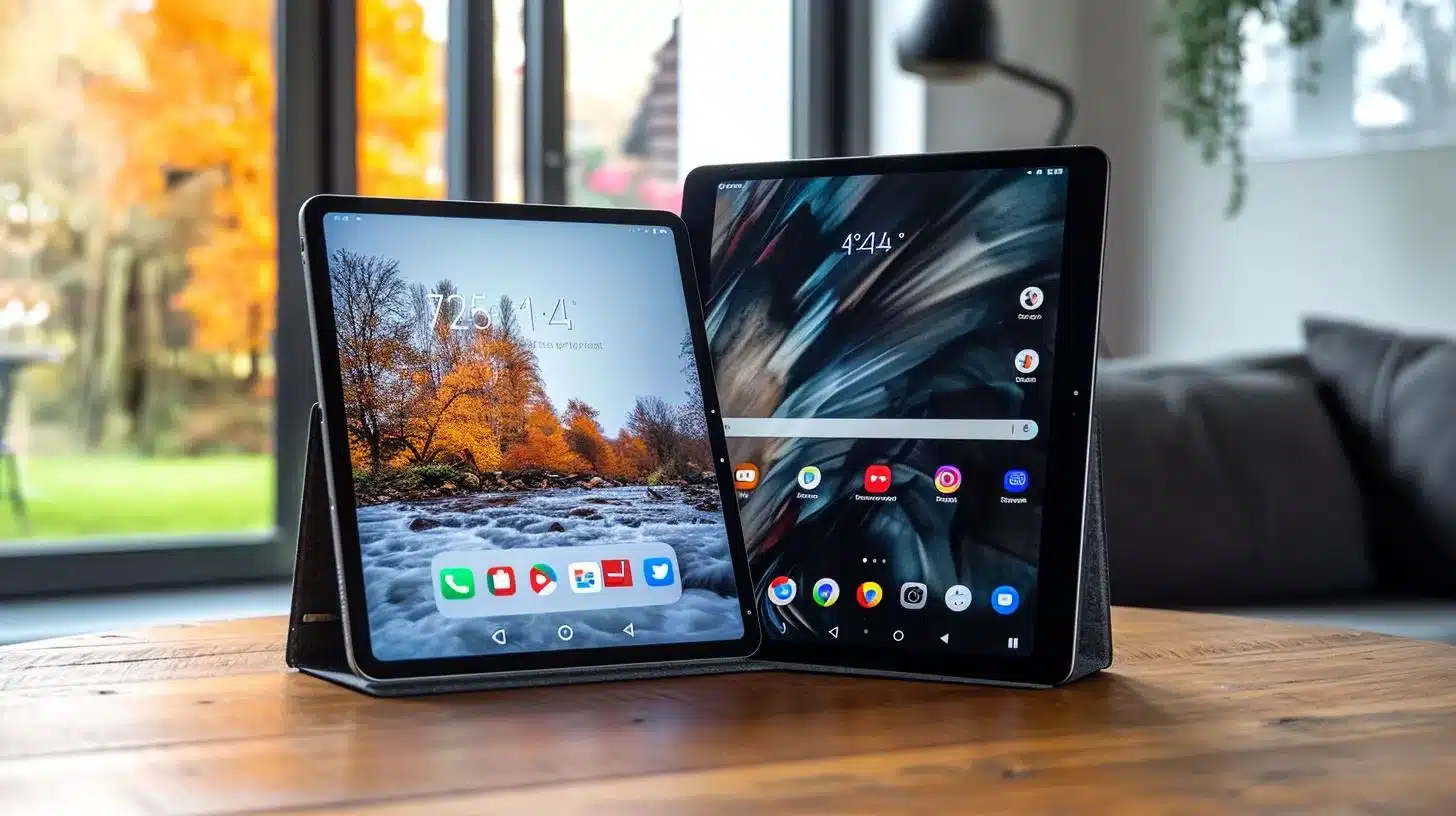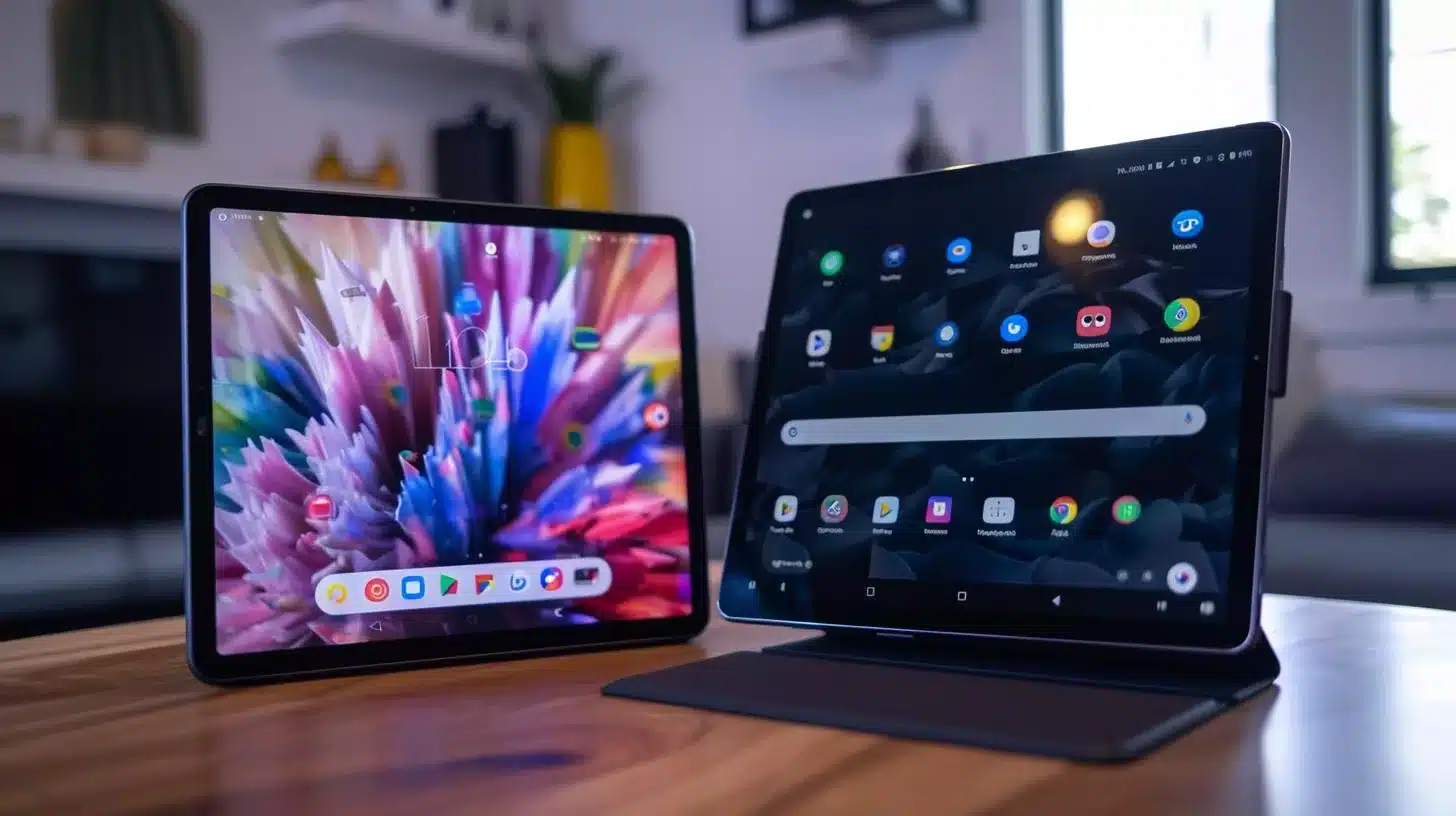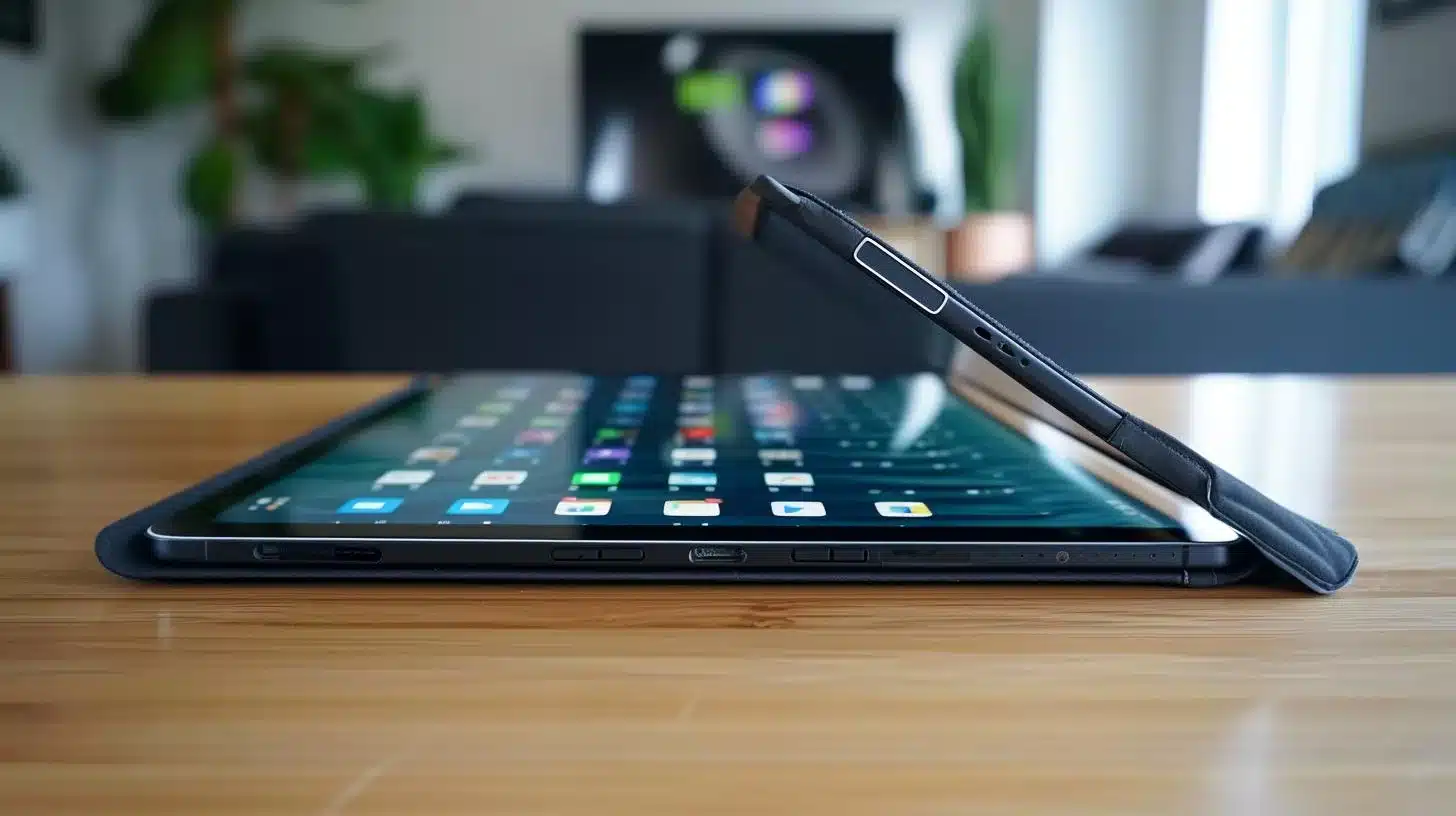
Xiaomi Pad 5 vs. Google Pixel C: Specifications
When it comes to the innards that power these devices, the Xiaomi Pad 5 is a clear testament to the leaps and bounds by which tablet specifications have advanced. Boasting a Snapdragon 860 chipset, it leaves the Nvidia Tegra X1 of the Pixel C in the proverbial dust. The Pad 5’s processor is not just newer but also significantly more potent, translating to smoother multitasking and gaming experiences.
The Google Pixel C, in its heyday, was no slouch either. It came with a commendable 3GB of RAM, which was quite substantial at the time, but the Xiaomi Pad 5 ups the ante with options of up to 6GB of RAM, allowing for more robust performance across the board.
Insider Tip: Always look beyond the numbers. The real-world performance can often defy what’s on paper, especially when comparing devices from different eras.
For more on the intricate specifications of these devices, dive into the detailed comparative analysis here.
Xiaomi Pad 5 vs. Google Pixel C: Design
Design is where the subjective nature of aesthetics comes into play. The Google Pixel C had a certain industrial charm with its anodized aluminum body, which, even today, would stand the test of time. However, the Xiaomi Pad 5 opts for a more contemporary approach with a sleek, minimalist design that aligns with current trends.
The Pad 5 is lighter and thinner, which is a testament to the advancements in design engineering. The ergonomics of handling a device for prolonged periods significantly benefit from such refinements.

Xiaomi Pad 5 vs. Google Pixel C: Display
Here’s where the battle gets vividquite literally. The Xiaomi Pad 5’s 11-inch WQHD+ 120Hz display is a visual feast, a considerable upgrade over the Pixel C’s 10.2-inch 2560×1800 display. The fluidity of the Pad 5’s screen, with its high refresh rate, provides a buttery smooth user experience whether you’re scrolling through documents or playing the latest games.
The Pixel C’s display was praised for its color accuracy and brightness, offering a premium viewing experience in its time. However, the advancements in display technology are evident in the Pad 5’s panel, which brings more vibrancy and a higher level of detail to the fore.
Xiaomi Pad 5 vs. Google Pixel C: Performance
Performance is the cornerstone of any tech comparison, and it’s no different here. The Xiaomi Pad 5’s modern internals ensure that it outperforms the Pixel C across all benchmarks. It’s not just about raw power; it’s about the efficiency of the newer hardware, which translates to better battery life and less heat generation.
To put this into perspective, I recall a time when my Pixel C stuttered under the load of intensive tasks, something Ive yet to experience with the Xiaomi Pad 5. This difference is palpable and speaks volumes about how far we’ve come in terms of tablet performance.
Xiaomi Pad 5 vs. Google Pixel C: Camera
Tablets aren’t typically the go-to devices for photography, but they’re increasingly being relied upon for video conferencing and augmented reality applications. The Xiaomi Pad 5 pulls ahead with its 13MP rear and 8MP front cameras, overshadowing the Pixel C’s 8MP rear and 2MP front shooters.
While the Google Pixel C was adequate for its time, the Xiaomi Pad 5 delivers a more polished camera experience, which aligns with users’ growing demands for high-quality video calls and the occasional snap.
Xiaomi Pad 5 vs. Google Pixel C: Battery
Battery life is a critical aspect of any mobile device, and the Xiaomi Pad 5 doesn’t disappoint. With an 8720mAh battery, it significantly surpasses the 9240mAh capacity of the Pixel C, but due to the more power-efficient components, the actual usage time tilts in favor of the Pad 5.
From personal experience, I’ve seen the Xiaomi Pad 5 last through a day of heavy use with battery to spare, something the Pixel C struggled with as it aged. The longevity of a device throughout a day’s work or play cannot be overstated, and Xiaomi seems to have hit the mark with the Pad 5.
Xiaomi Pad 5 vs. Google Pixel C: Software
The software experience is where the battle gets nuanced. While the Google Pixel C was launched with Android 6.0 Marshmallow and has since ceased receiving updates, the Xiaomi Pad 5 ships with MIUI for Pad, Xiaomi’s take on Android 11.
MIUI for Pad is a double-edged sword; it brings a myriad of features and customizations but can be overwhelming for users who prefer stock Android. However, Xiaomi’s commitment to updates and new features might sway user preference towards the Pad 5.
Xiaomi Pad 5 vs. Google Pixel C: Price and availability
This is where the Xiaomi Pad 5 really shines. Despite its superior specs and performance, it comes at a price point that undercuts what the Pixel C demanded at launch. The value proposition is strong with the Pad 5, making it accessible to a broader audience.
Remember, the Pixel C has been out of the market for a while, but if you’re considering a second-hand buy or just comparing historical pricing, the Xiaomi Pad 5 is undeniably the more financially savvy choice.
Personal Experience: Making the Switch to Xiaomi Pad 5
I’ve been a loyal user of the Google Pixel C for the past few years, relying on it for both work and entertainment. However, as my needs evolved, I found myself seeking a more powerful and versatile Android tablet. After much research, I decided to make the switch to the Xiaomi Pad 5.
Embracing the Enhanced Display
Upon unboxing the Xiaomi Pad 5, I was immediately captivated by its stunning display. The vibrant colors and crisp resolution truly enhanced my viewing experience, whether it was for streaming my favorite shows or working on graphic-intensive tasks.
Boosted Productivity and Performance
The transition to the Xiaomi Pad 5 also brought a noticeable improvement in performance. The seamless multitasking and swift responsiveness allowed me to breeze through tasks that previously felt cumbersome on my old tablet.
Finding Value in the Upgrade
Despite the initial apprehension about switching from a familiar device, the Xiaomi Pad 5 proved to be a worthy upgrade. Not only did it align with my performance expectations, but it also came with a more budget-friendly price tag compared to other high-end tablets.
This personal journey of transitioning to the Xiaomi Pad 5 has solidified my belief in its capabilities, making it a compelling choice for anyone seeking a feature-rich Android tablet.
Xiaomi Pad 5 vs. Google Pixel C: Which should you buy?
Let’s cut to the chase: if you’re in the market for a tablet today, the Xiaomi Pad 5 is the clear choice. It outperforms the Google Pixel C in every measurable way and does so at a price that is hard to argue with. The Pixel C, while a commendable device in its prime, simply cannot compete with the advancements represented by the Xiaomi Pad 5.
For those who are nostalgic or are considering a Pixel C for its historical significance, it’s an interesting piece of tech history but not a practical purchase for the current user.

In conclusion, the Xiaomi Pad 5 is a triumph of modern tablet engineering, offering a balanced blend of performance, design, and value. It demonstrates just how far Android tablets have come since the days of the Google Pixel C. While the comparison might seem lopsided, it’s a testament to the relentless pace of technology and the ever-improving experience it delivers to users. The Xiaomi Pad 5 not only stands on the shoulders of giants like the Pixel C but also sets the bar for what is yet to come.
Questions
Q: Who makes the Pixel 11″ tablet and Xiaomi Pad 6?
A: Google manufactures the Pixel 11″ tablet, while Xiaomi produces the Pad 6.
Q: What are the key differences between Pixel 11″ tablet and Xiaomi Pad 6?
A: The Pixel 11″ tablet boasts a more seamless integration with Google services, while the Xiaomi Pad 6 offers a more customized user experience.
Q: How does the performance of Pixel 11″ tablet compare to Xiaomi Pad 6?
A: The Pixel 11″ tablet delivers exceptional performance with its optimized hardware and software, while the Xiaomi Pad 6 offers a balance between performance and affordability.
Q: Which tablet is more cost-effective, Pixel 11″ or Xiaomi Pad 6?
A: While the Pixel 11″ tablet may be pricier, it offers a more seamless integration with Google services, which may justify the cost for some users.
Q: What makes the Pixel 11″ tablet a better choice for tech enthusiasts?
A: The Pixel 11″ tablet is designed to seamlessly integrate with Google’s ecosystem, offering a more cohesive experience for tech enthusiasts.
Q: How does the Xiaomi Pad 6 stand out in terms of value for money?
A: The Xiaomi Pad 6 offers a compelling balance between performance and affordability, making it a great value for those seeking a budget-friendly option in the tablet market.
